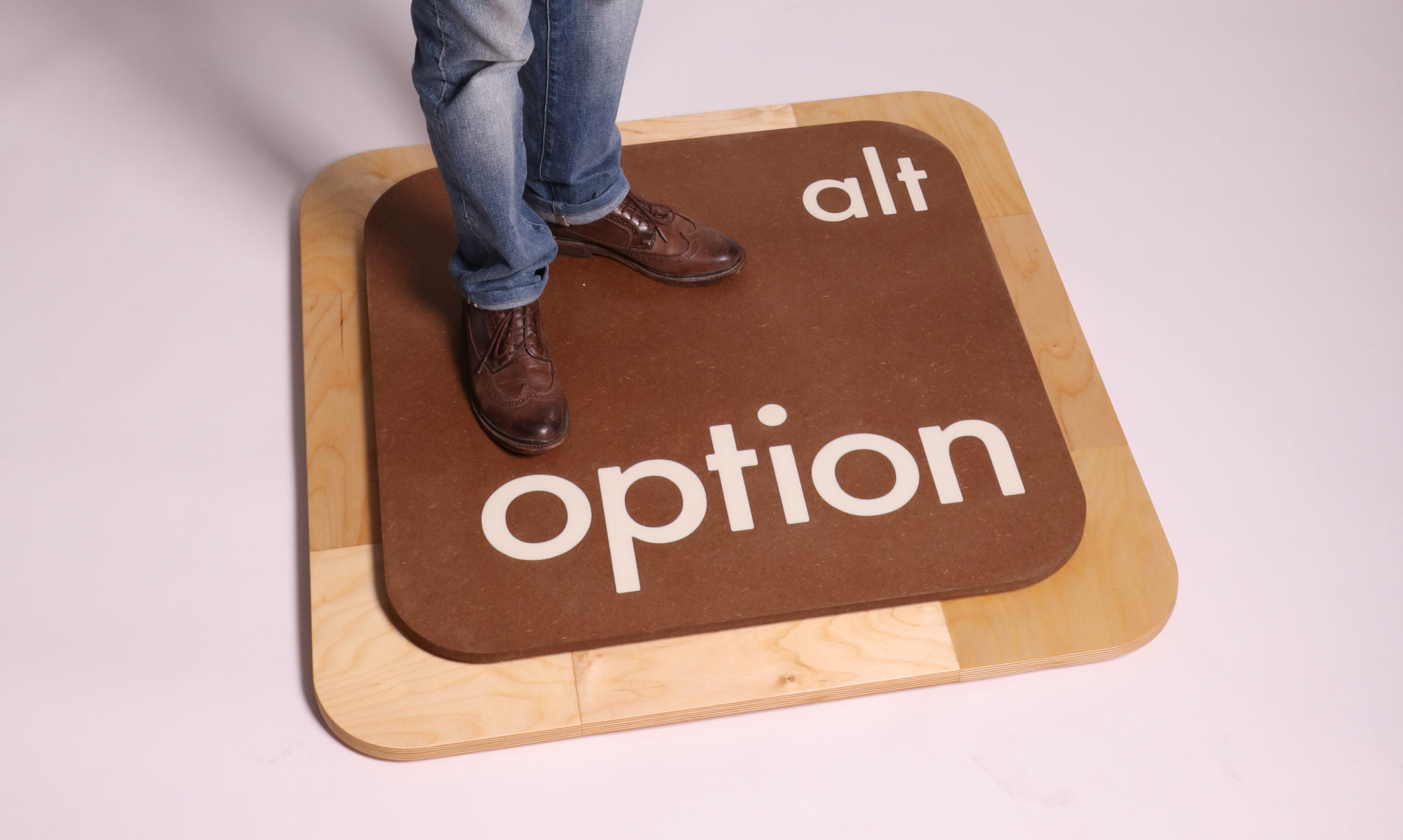- What questions did your players have?
- Players asked if the ball is allowed to ricochet off of the walls. This is unspecified in the rules, so it makes sense that this would be a valid question. Next, players wondered about if they had to move the maximum number of pegs. One of the players spun the wheel after their turn and got a 5, and they wondered if they have to use all 5 movement opportunities. Lastly, another question they had was based on an unspecified situation of hitting one of your own ballot boxes. The ball could ricochet back and hit your own boxes, so I will have to think of a way around that.
- How quickly did they learn to play?
- Players learned fairly quickly. The rules are simple, and the gameplay is very straight forward. After answering the questions they had about the rules, players were able to understand the game fully.
- What kinds of interactions did the players have?
- The players interacted directly with each other. Moving the pegs around made some interesting interaction, as players strategized what peg placement would benefit them while giving the other side a disadvantage. Furthermore, while a player would aim toward the other player’s ballot boxes, there was some tension arising on whether the peg placement was efficient.
- What confused players?
- Mostly just unspecified rules, which I ended up having to answer for them. These unspecified rules were discussed in what questions players asked, but another confusion was if they were allowed to hit multiple ballot boxes. One of the players made the interesting point that if more than one ballot box is knocked over during a turn, maybe the player can choose which ballot box to knock over. Of course, this is something else that will need clarified in the rules. There can be turns in which all three ballot boxes can be knocked over, ending the game in one turn.
- What made players excited?
- Most of the excitement came from spinning the wheel or getting bank shots. The wheel is luck-based, so excitement derived from whether players were going to spin on a big number. The bank shots were hype, as players not only got the ricochet but bypassed the pegs in the middle of the board.
- What did your players enjoy doing?
- Players enjoyed hitting the ball with the popsicle stick. It reminded them of knock hockey, using sticks to hit the puck to the other side of the board.
- Did any aspect of the game frustrate players?
- The only thing that mainly concerned players was the fact that there was no net to catch the marble after hitting the ballot boxes. This is something I’m surprised I haven’t thought of, but as players started hitting the ball, it flew off of the board.
- What is your plan to address player questions. confusion and frustration?
- In order to address most of the confusion and frustration, I will have to make some clarifications in the rules. Most things that confused the players were not touched upon in the ruleset, so it wouldn’t hurt to make the necessary clarifications. Although I will probably end up dealing with the ballot boxes, whether it is adding a net or completely revamping the mechanic.
Refined Game Documentation #1
Mother’s Wish (3 players)
Short Summary
This is an empathetic playing experience based on gathering groceries for your sickly mother. The game revolves around scoping out proper groceries on the shelves in order to add them to your cart. The first player to complete their shopping list and load up the cart wins the round, collecting the shopping list as a signifier. There are three rounds to each game, and whichever player has more shopping lists than the other wins. This game is for players who love competition, as well as quick reaction timing. This game also involves strict observation skills. Think of it as an Eye-Spy book, but you are competing against someone to find the hidden objects.
Design Process & Thought Process:
Iterative Design
I’ve had to think of ways to simplify the graphics of this game, in order to keep the players focused on the task at hand. I didn’t want to overcomplicate the design, so players aren’t distracted and are able to discern between items. For example, the setting of the game takes place in a store, so I designed a simple floor tile that doesn’t catch the players off guard.

Designing the cards were tricky, because I had to think of a way to efficiently convey what products I wanted the players to grab off of the shelves. The main challenge to this was the fact that there are some products that are the same, but different color.
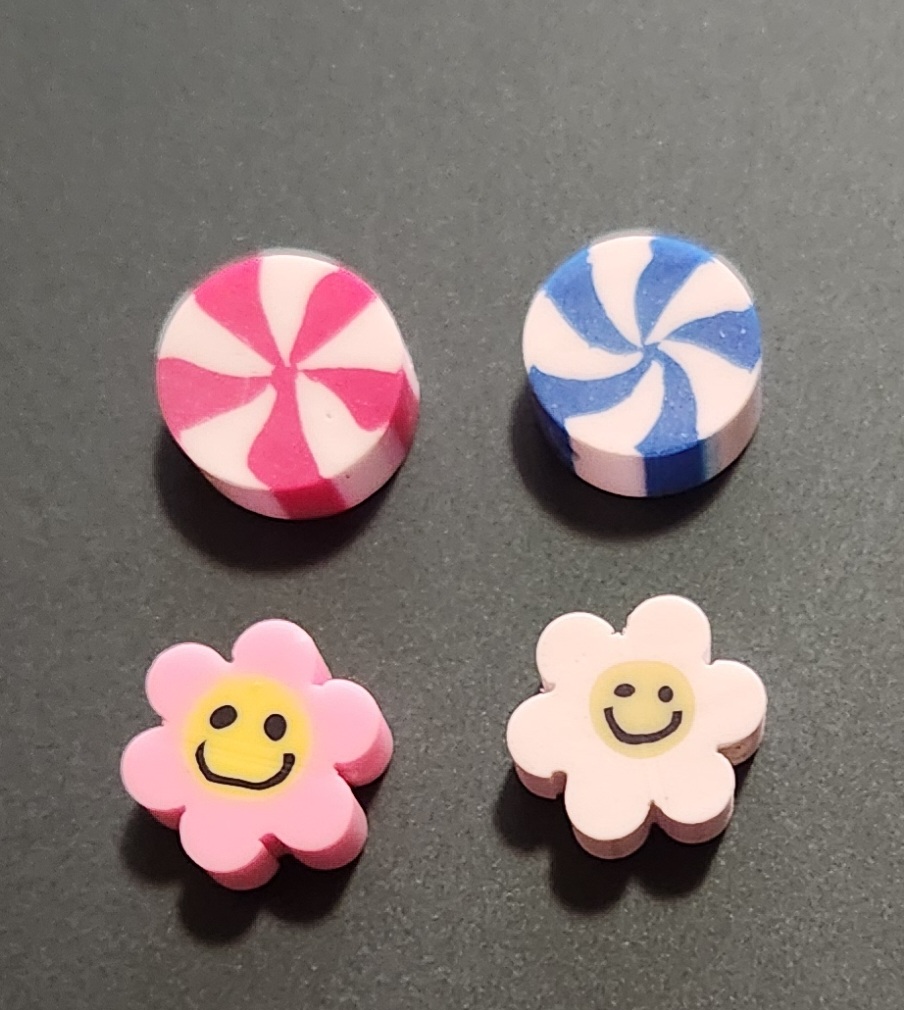
In order to address this, I specified under the drawing what color was to be sought out.

Although the cards are simple, they give a general consensus of the card layout and design. Taking the final iteration to photoshop, I will be able to photograph the items onto the cards maximizing recognition.
The last design iteration were the shelves. I thought about making the shelves look more like shelves, each with layers of items. The problem with this design was the fact that it would be very hard not to knock the shelves over, and it would be very hard to pull the items off of the shelves. In order to fix this, I made the shelves more like bins instead of actual shelves:
Game Mechanics
There are two different types of player roles for the gameplay, which are the shoppers and store manager. There are two shoppers that are competing against each other. The players are pulling items off the shelves, trying to be the first to complete the shopping list. The shoppers use tweezers in order to pull the items off of the shelves into their carts, shown in the image below:
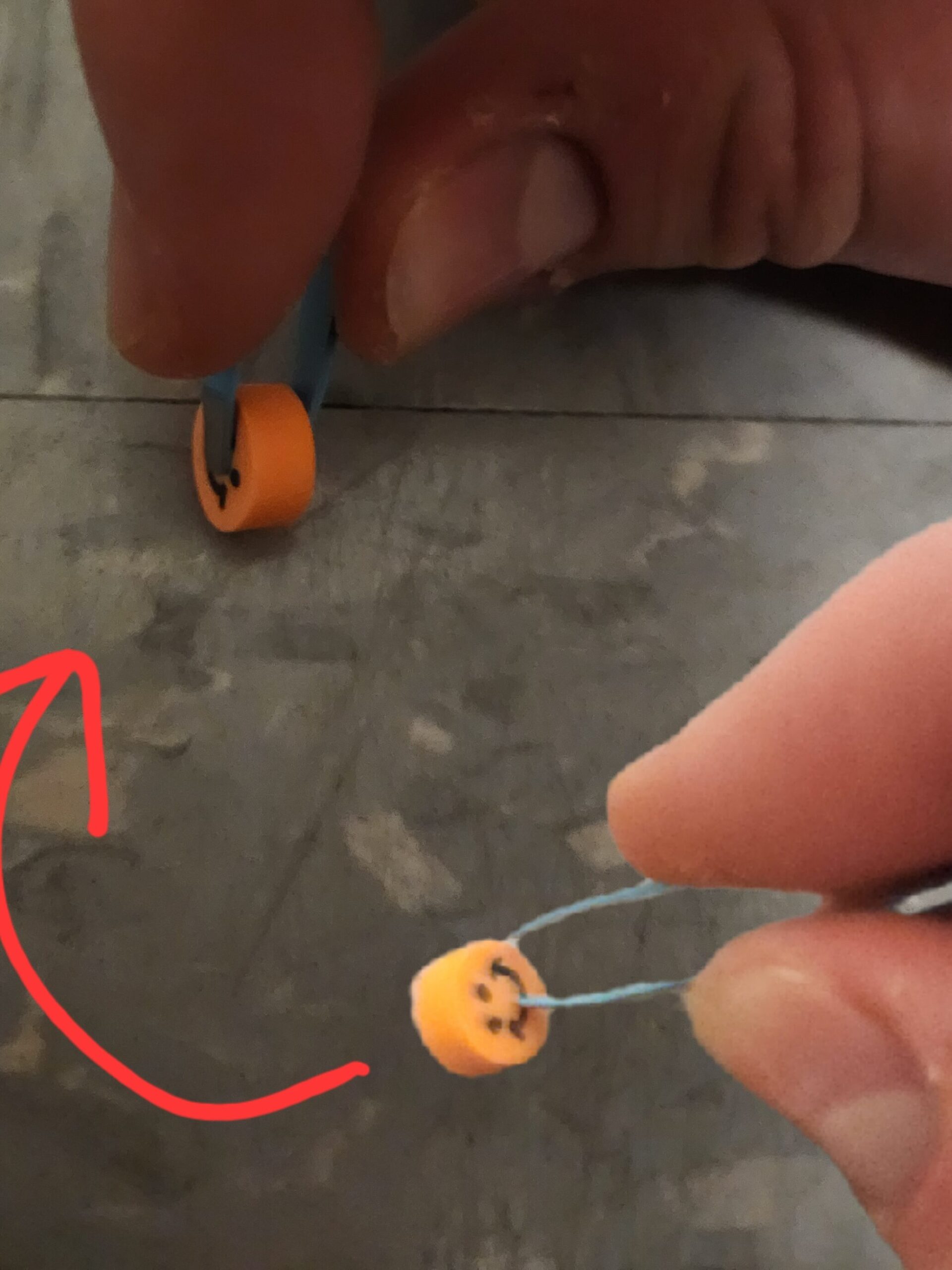
They will keep going down the list. The first shopper that finishes the list, with all of the corresponding items in their cart, collects the shopping list card which signifies two points. The list in which the shopper completed are two points. In a round, there are 3 shopping list cards during a game for the players to compete for. One card after the other. The max number of points to earn in a game is 6. If a player knocks items off of the shelves as they are trying to grab an item, that is a point deduction. The number of items that are knocked off of the shelf doesn’t matter, it is only a one-point deduction per round.
The Store manager oversees the game and keeps track of the scoring system. They do not directly play in the game, but act as a “boss” or “moderator” of the gameplay. For example, if a player scores a point, then it is the manager’s job to keep track of who is winning. The store manager reorganizes the shelves between rounds, sets up and stocks the shelves. They flip the grocery lists over, in order to signify when the shoppers must start shopping. They run the store.
Player Goals
The manager doesn’t have any real goal compared to the shoppers, who have a direct goal to win. The only main task of the store manager is to make sure the game is running efficiently, as well as restocking the shelves between rounds. This way, the items don’t run out as the shoppers grab them off of the shelves.
On the other hand, the goal of the shoppers is to collect the shopping lists, which signify points. As stated in the game mechanics, the most points you can score during a game is 6. With each card being worth 2 points, the players must complete their lists, collect the card and snag the points. In the end, whichever player has more points wins. The number of points can also be affected by whether the shopper has knocked over items which is a point deduction.
Gameplay Sequence
After the store manager stocks the shelves and the cards are in placement, the game is ready to commence. The Store manager will flip over the first card, which will have a list of items to take off of the shelves. As soon as the card is flipped over, both shoppers scurry around the store to pick the items off of the shelves. Once a shopper finds an item, they pick it off of the shelf with their tweezer and put it in the cart. They will keep going down the list. The first shopper that finishes the list, with all of the corresponding items in their cart, collects the card which signifies two points.
Once all 3 grocery list cards have been gone through, it is time to tally up who has earned the most points based on how many cards they have kept. If the player has knocked items off of the shelves, that is a single point deduction. This is one of the jobs of the store manager, making sure who is in the lead (point tracking). If by chance both shoppers have the same number of points and there is a tie, then both shoppers must compete an additional round to determine who is the final winner.
Player Interaction/Gameplay:

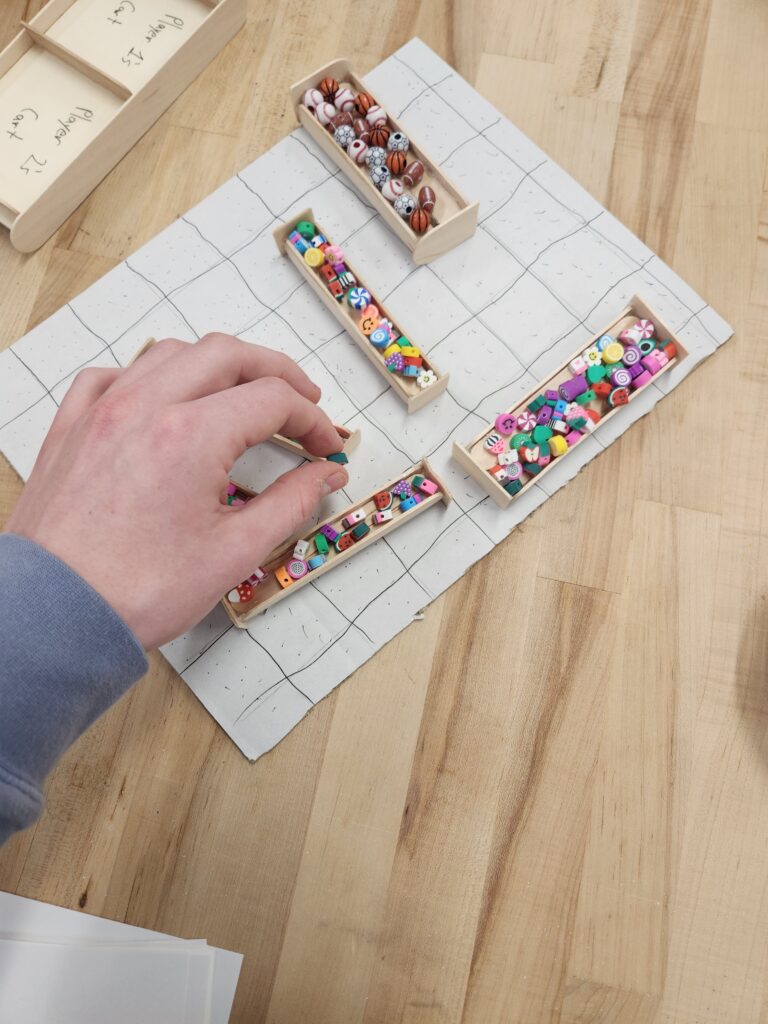
Game Board & Components
The game board – simple in design, allows the players to maintain focus on picking out the items. Since the board is simple, the colors of the items stick out, making it easier to differentiate between the groceries. This is what the game looks like set up:
As mentioned in the iterative design section on the shelving, I made sure that the shelves were more like bins. If I were to make the shelves stand up like typical store shelves, players would be more inclined to knock them over and scatter items everywhere.
Furthermore, a feature I added in the game was the ability of the manager to organize the shelves in any way they want on the game board. This allows the manager to not only control the flow of the game but potentially make things tricker or harder for the shoppers.
Tools
The two shoppers use a tweezer in order to pick the items off of the shelves. Players cannot use their fingers because the challenge of the tweezers makes it more interesting. Both shoppers have a shopping cart that they also put their groceries in. In the beginning of the game, the two players decide who is who (between players 1 and 2).
Rulebook & Playtesting
Playtesting Notes
- What questions did your players have?
- Some common questions that the players had were based on the rules, such as “What if you pick up and put back items?” or “Can I take from the other player’s bin?” Any of the questions were based on unspecifications that I will have to clarify in the rules, in order to prevent people from doing the wrong actions. Another question was “Am I allowed to block the other player?”
- How quickly did they learn to play?
- It didn’t take long for the players to catch on to the ruleset. I’d say that this game has one of the easier rulesets I’ve made but nonetheless needs improvement. The players were able to play the game and adapt, but they still ran into complications that I will have to personally look over.
- What kinds of interactions did the players have?
- This is a very competitive game, and the players were constantly at each other’s throat. From a direct interaction, the players clash tweezers and wrestle with pieces time to time, as well as striving to the first to earn points. However, not much talking is involved in the game, as players are dialed in to focus on what pieces to grab.
- What confused players?
- Players were less confused about the rules, and more confused about the pieces they had to grab. I’ve noticed that in the prototype, I did not do a good job of indicating what type of pieces they have to lookout for. This confused the players, as they sometimes grabbed the wrong pieces or mistakened items for something else.
- What made players excited?
- The excitement mainly derived from the bulk of the gameplay, where players were rushing to earn points. When the points were earned, it was rewarding to the players too, complimenting their quick-thinking and observation skills. The anticipation of the manager flipping over the card evoked excitement as well, as the players eagerly awaited their next challenge.
- What did your players enjoy doing?
- The players enjoyed using the tools (tiny tweezers and shopping carts) and competing with each other. They enjoyed navigating through the miniature store model, which gave them an environment to interact with.
- Did any aspect of the game frustrate players?
- I wouldn’t say so, but the players suggested a mechanic to make things easier for the playing experience. I think it was more about a factor that they wish was a part of the game rather than frustration. For example, they suggested a clock/bell that could be hit to indicate that they are done with the shopping list, in order to prevent frequent ties.
- What did your players learn/take away from your game? Was that what you intended?
- I’d say my players learned the aspects of keeping cool during a moment of chaos. This game really enforces the principles of maintaining composure and concentration, no matter how stressful the environment may be. This was sort of what I intended, since I was looking to create a fast-paced and competitive game.
- What is your plan to address player questions, confusion, and frustration?
- Just as I’ve tackled criticism in the past, I plan on addressing the confusion, questions and frustrations of players through communication and/or feedback. Through frequent playtesting, I expect players to tell me the things that are wrong with my game. There have been instances where I thought the game was perfect from the start, until players have exposed its flaws in rules. I’ll also have to read over the rules of my game and make extra clarifications and changes to better the playing experience.
- If your players didn’t get your intended message, what will you change?
- One thing I will point out is that this game is supposed to make the players feel empathy, as the premise of the game revolves around getting groceries for your sick mother. I don’t think the players understood that, at least I can do a better job at making that known. In order to fix this, I will add designs to the cards which will show a small picture of your mother asking for the specific groceries. This way, players will be reminded of their sick mother, making them more determined.
Game Reflections
Through the development of this game, I’ve spotted out a lot of design potential that can be put into a final iteration. This game can be polished, and rules can be specified in order to maximize gameplay. Photoshop will carry this game to victory, as item recognition will be much easier on the cards. Next time I will make sure to not only improve upon the graphics, but to word the rules better. I believe that I can definitely word things in order to help the players understand the mechanics further. Overall, both graphics and rule iterations can help me consider the players better and their playing experience.
player reviews
barrel of truth (second iteration)
- What was the most frustrating moment or aspect of what you just played? Their really wasn’t a frustrating thing about this game.
- What was your favorite moment or aspect of what you just played? I really liked the new topic cards, they brought some better talking and the public and anonymous was really fun to be funny on the anonymous cards.
- Was there anything you wanted to do that you couldn’t? No, this game has everything i could have wanted.
- If you had a magic wand to wave, and you could change, add, or remove anything from the experience, what would it be? Their isn’t any thing i would change.
- What should be improved with the next version? nothing its perfect.
- What was the game’s message? talking and getting to know people but being able to tell things you wouldn’t normally but be able to say it.
- Describe the game in 3 words: truth, fun, friends
Case study- overconsumption
The Campaign Trail
the campaign trail –
To start the game the deck of candidate cards will be passed around the table face down. When you get the deck of cards you are to choose a card randomly without looking at them. This will be who you play as during the game.
Start the round with the oldest player rolling the 6 sided die.
Play will continue clockwise.
Landing on a red or blue dot will gain you voters.
You can only gain voters if you land on the color that matches your party.
The amount of voters you gain each time is indicated on your candidate card.
Not all of the amounts on the cards are the same, this difference is based on statistics about voter preference in a candidate. Things like ethnicity and gender affect these statistics.
Special spots:
Smear campaign:
If you land on this space you are able to make a campaign against one of your opponents. First choose which opponent you will steal from and then roll the die to see how much of your opponent’s voters you steal for yourself.
1 = .1x of opponents
2 = .15x of opponents
3 = .2x of opponents
4 = .25x of opponents
5 = .3x of opponents
6 = .35x of opponents
Scandal:
Scandal spaces will make you lose a percentage of your voters.
That percentage will be said on the space.
Ad campaigns:
When you land on an ad space you will pick the card on the top of the ad pile. You will keep this card until the end of the game. At the end of the game you can flip these cards over and add how many votes you get to your score.
The game ends when everyone makes it to the end. The goal is to have the greatest number of voters.
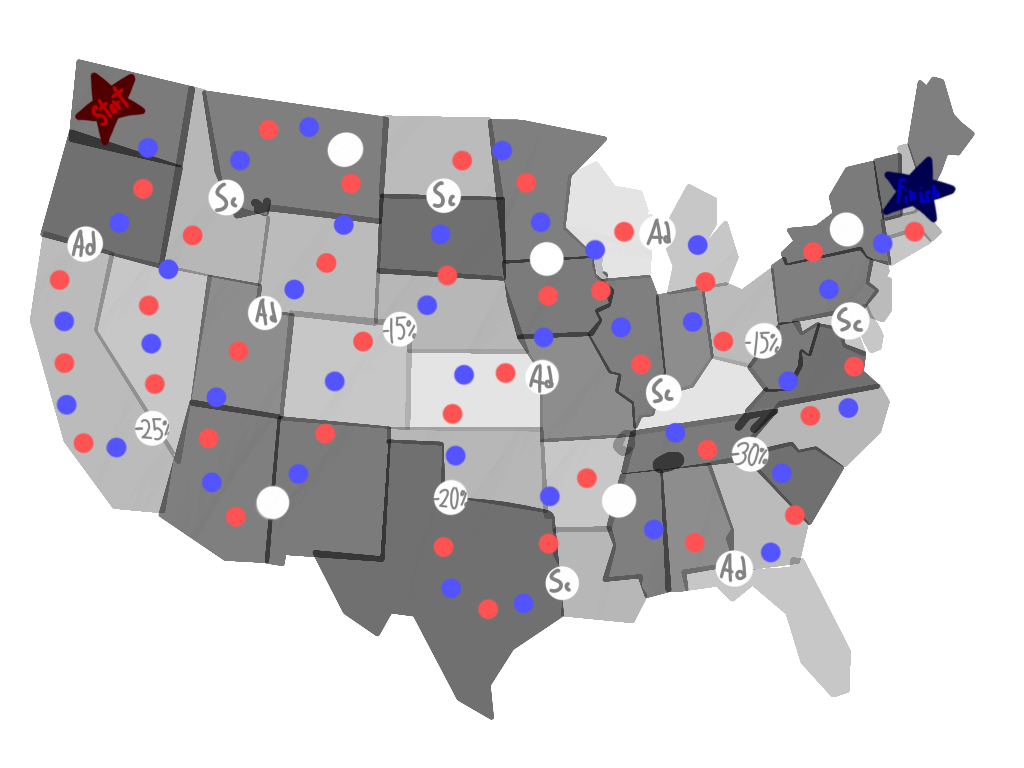
Cry Me a Pond Playtest Notes
What was the most frustrating aspect? Maybe not wanting/ not thinking about an answer to the card
What was your favorite moment? I like the calming color scheme. The discussion brought out aspects of other people you didn’t expect. The social aspect of this game was fun.
Was there anything you wanted to do? Maybe keep going… The board ends but what if people haven’t reached happiness? Could it be a circular pond?
If I had a magic wand to change, add or remove? Maybe labeling the colored lily pads? Which one is sad and which one is happy.
What should be improved? Board shape/ length of lily pad path – it stopped too abruptedly. Also, no vengeful water spirit cards were chosen… I wanted to interact more with that but then I also question if it contradicts your game’s message? Is the purpose of the game to talk through/solve problems leading to peace? because school questions don’t do that. I guess what I’m getting at is what is the purpose of the Ames Card’s in this game’s larger message.
Game Message? Venting, collaboration, and mutual support lead to social and mental benefits.
Game in 3 words? Empathy, conversation-based, social-health, deep, bonding
Other questions: If taken further, it would be helpful to add more clarity in the rules. how long does it take? Player range? Pieces?
Projection- Harmony Jablon
For my projection experiment, I used a projector, a shower sheet, and a cutout box to project a circular, ocean-like light. I set up the projector on the floor and pointed it toward a small hallway in my suite. Then I taped up the shower curtain to project it onto and then placed a small box in front of the projector. Then I went behind the curtain to show the final projected animation. (The video will not upload, so I sent it through email)


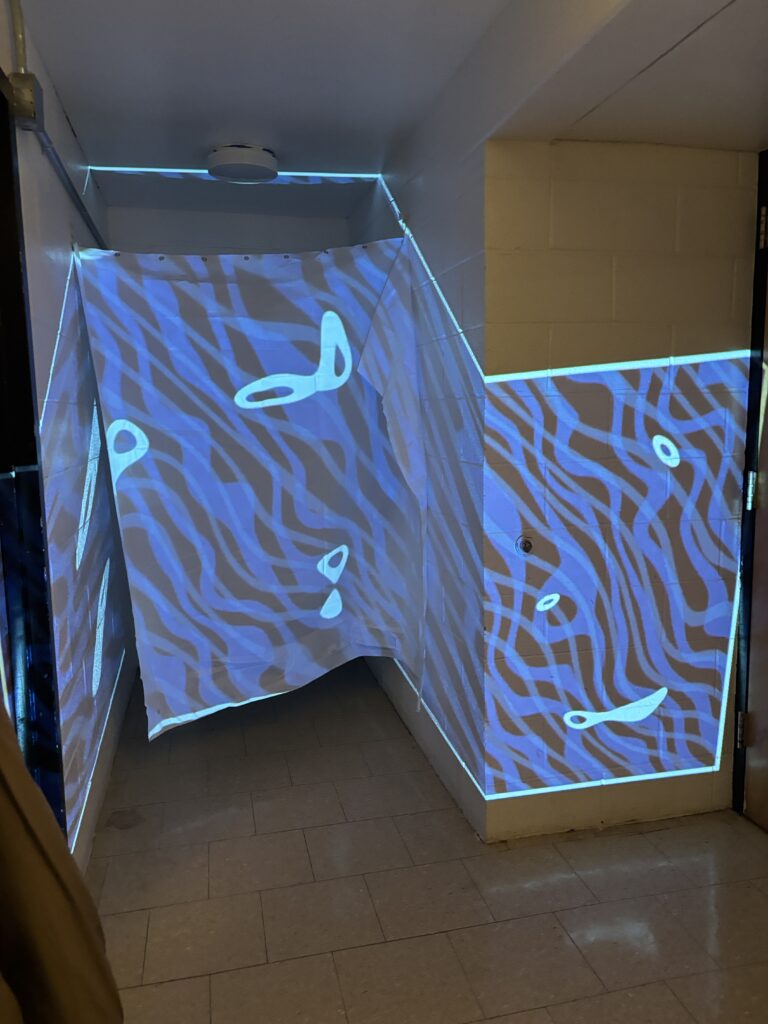
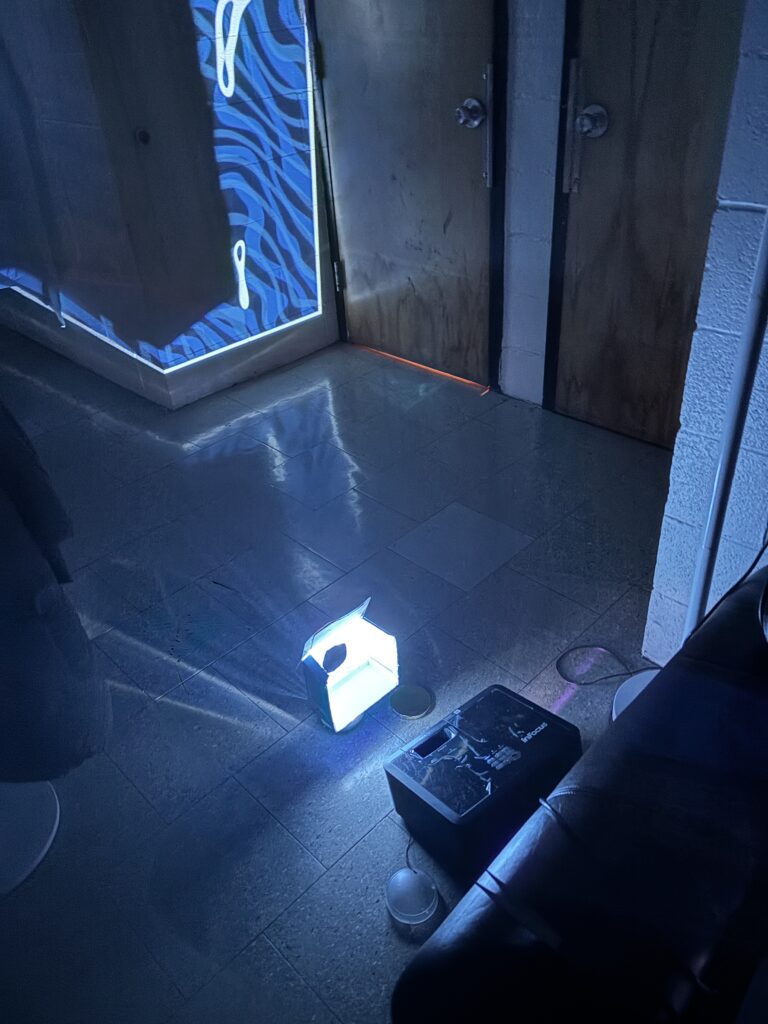
Butterfly Effect Game Test
Most frustrating aspect? I thought the spaces + dice combo was annoying. I felt like I was making progress so slowly. the number of spaces between each butterfly was always one more than the max (3). I felt like it added a sense of predictability: you roll, next turn you get a butterfly, you roll, next turn you get to a butterfly.
Most fun aspect? Answering the question cards
anything you wanted to do but couldn’t? I wish there weren’t card repeats. It makes it less interesting. Oftentimes, when someone reads a card, the group discusses it.
If I had a magic wand to change, add or remove? People shouldn’t begin by choosing to go left or right (people who go left will never win). There should be a couple spaces straight before the first butterfly choice which then directs them left or right.
What should be improved? the card and the boards. Butterfly player pieces would be cute.
Game’s message? to live cleaner and work towards a better world
Game in 3 words? persuasive, revealing, purposeful
Hues n Cues Playtest
What was the most frustrating aspect? People being colorblind
Favorite Moment of the game? People being color blind AND funny, creative, or unhinged descriptions of colors.
was there anything i wanted to do and couldn’t? I really enjoy this game the way it is!
If I had a magic wand to change, add, or remove anything? I think the colors on the card should match the board. I think they also could be more creative with the card designs – what if they were more inspired by pantone swatches? Also, I would’ve liked perhaps a different shape of marker?
Improved for next version? I think this game is functional and fun without any changes! However, I would enjoy the design changes as stated above.
Games message? Training for working at crayola
Game in 3 words? Art-nerd, Group, Creative
Harding – Video Performance
Amber and Sara’s Game: “Cry me a Pond” Case Study
Short Summary
The game, “Cry me a Pond” is about sharing experiences that create a sense of empathy among students that have experienced the struggles of life, generally through college, coming of age, and of course game design. While the game has a generally niche audience, the concept is based on sharing thoughts, feelings, and answering real questions that were part of the reading and assignments posted on Professor Ames’ website.
Primary Audience:
Generally the audience is media arts students that have a general understanding of being in a creative funk, but it can also be played by students who have general knowledge of game design skills.
Design Process & Thought Process
Iterative Design:
Amber: For the game board design, I decided to just do a simple pastel blue/green/purple gradient. I chose these colors because they are soothing and relaxing, which felt fitting for an empathy-based game. We decided to cut the pond shape out and I placed different colored lily pads as the spots to move on the game board. The font is simple, sans-serif, clean. We used Montserrat specifically.
The happy and sad card designs are very reminiscent of the pond game board design. The use the same gradient in the background with the same fonts. The backs of the cards are very simplistic, with a vector symbol to indicate the type of card and the words “Cry Me a Pond” for branding. The size of the cards are 3.5 x 5.75 inches, making them fairly large.
Thinking about what I would do differently for future versions, I don’t think I would change much aesthetically. I think the simple, pastel aesthetic is fitting for the type of game we decided to make. I would change a little bit of the board design though, since people were a little bit confused about what lily pad to move to next. I would also toy around with the idea of having some of the spaces become “flooded”, so maybe the lily pads are extra game pieces aside from the board.
Sara: For the design of the “Vengeful Water Spirit” I decided to create the ‘sprite’ using Procreate on my ipad. I stuck to a more chibi style of the Ames-esque look, as I wanted to maintain the simplicity of the overall style of the game Amber created with the soothing and relaxing colors, while also adding the comedic value to the character.
The water spirit cards also follow the basis of how Amber created the happy and sad cards, with a similar gradient, but in the color orange (as its Ames’ favorite color) and simplistic with the drawing of the vengeful water spirit in the middle of the words “Cry me a Pond – Vengeful Water spirit Professor Ames” the size of the cards is consistent for the game, being 3.5 x 5.75 inches.
Thinking about what I would do differently for different versions, I would have to agree with Amber on sticking to the same overall aesthetic and the new features she mentioned. For myself, however, I think I would spend a bit more time considering what the Vengeful Water Spirit cards would say, so there’s more aspect to knowing the concepts we learned in Game Design.
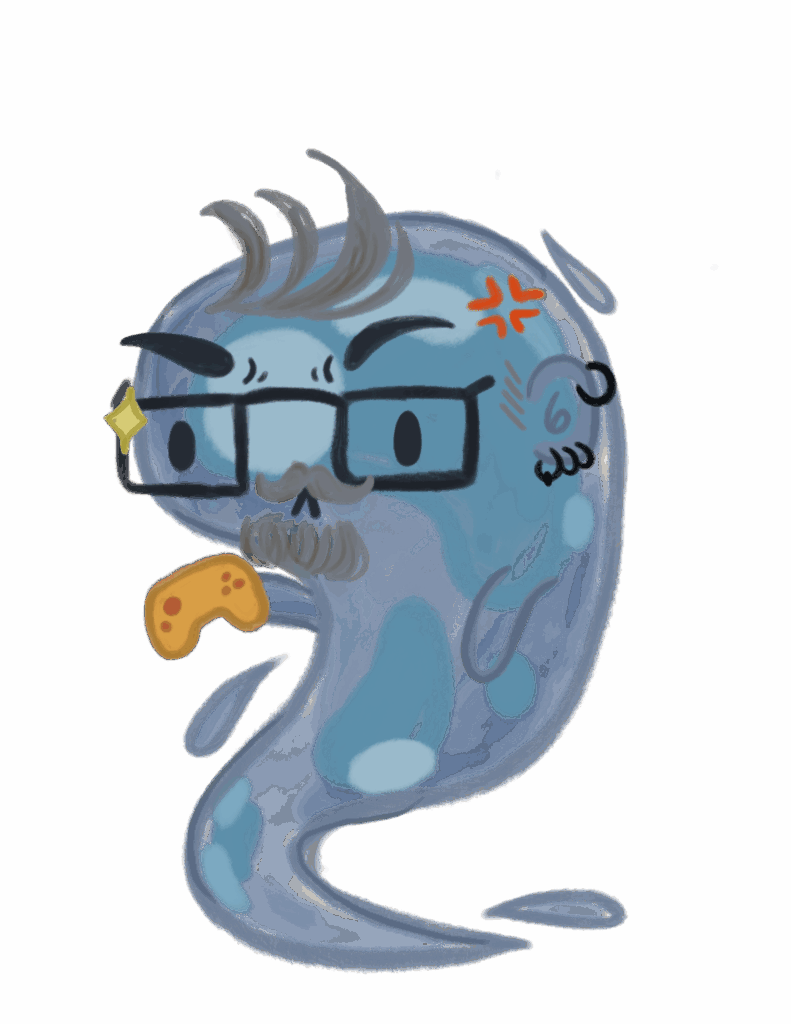
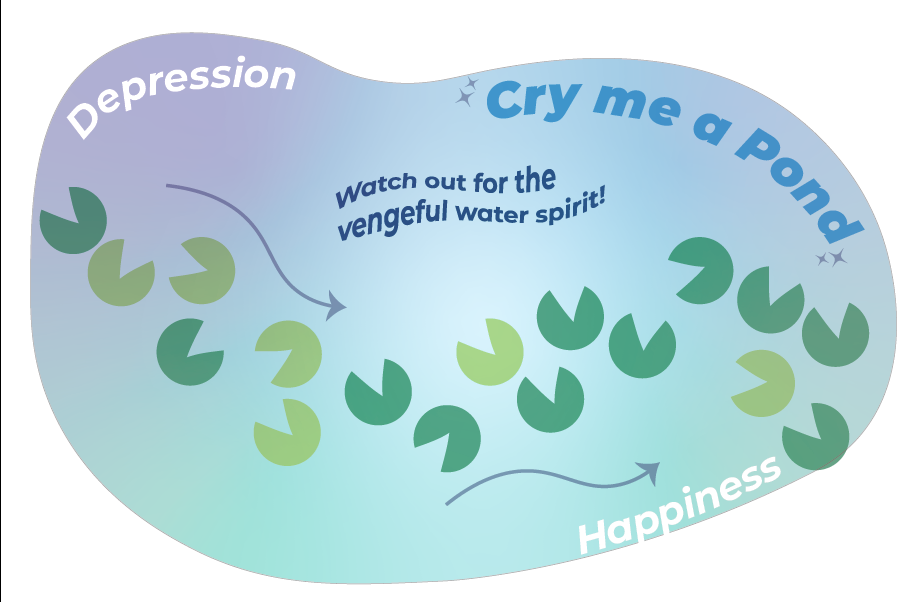
Game Mechanics:
Players will collectively roll a die as a group, and communicate their feelings and thoughts according to what type of card they get from the three types. Based on their roll, being a 2 or a 6 or what color lily pad they land on. The game only ends once players reach “happiness”
Player Goals:
To discuss emotional experiences with fellow classmates, while also practicing your understanding of concepts mentioned in Game Design classes with Professor Ames.
Literally (in the game rules): get to happiness.
Gameplay Sequence:
When the game is set up, with the gameboard in the middle, and three piles of both happy and sad cards, one player will roll the die for the whole group (players can alternate amongst themselves who rolls the die each turn) with the role player will then move the duck the number of spaces as indicated on the die EXCEPT IF YOU ROLL a 2 or 6. If you roll a 2 or 6, pick up a Vengeful Water Spirit card and follow/discuss the card . DO NOT MOVE. However, If you land on a dark green space, pick up a happy card (the smiley face 🙂) and if you land on a light green space, pick up a sad card (the teardrop) after this is performed a few times – the game is over when you reach happiness.
Game Board & Components:
Our game board is both literally and figuratively a pond, where the one end of the board is depression and the other end is happiness. You want to move towards happiness so you use your duck to hop along the lily pads. The duck represents the whole group’s progression from depression to happiness. This definitely needs improvement in future versions since the current method of movement was confusing to players.
The different colored lily pads indicate the different cards that you need to pick up, with the light green being the sad cards and the dark green being the happy cards.
The other components of the game are the happy, sad, and vengeful water spirit cards. The happy and sad cards ask thoughtful questions to try to arouse meaningful discussion amongst the players. The vengeful water spirit cards are specifically game design oriented questions, that are more so based on memory recall, versus a meaningful emotional discussion.
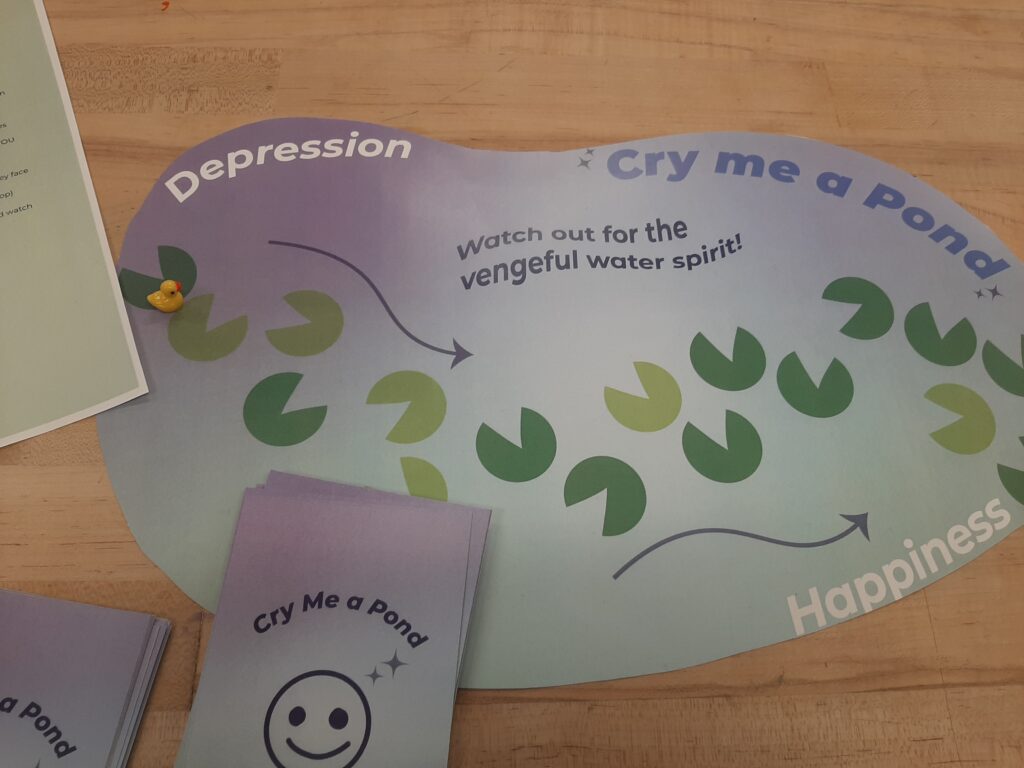
Rulebook and Playtesting
Rulebook Sample:
Playtesting Notes:
The biggest lesson we learned from playtesting was that we need to work on a better way to balance the amount of times you get an Ames Vengeful Water Spirit card amongst all of the other cards. With the original rules and board set-up, it was nearly impossible for players to come across the vengeful water spirit just because they weren’t rolling the right numbers. There were also two few lily pad spaces on the board and it made the game go a lot faster than intended. So both the number of spaces on the board, the movement amongst the spaces, and how likely it is to come across the vengeful water spirit are all factors that we will need to improve upon in future versions.
Game Maker’s Play Test Notes – Cry Me a Pond
- What questions did your players have? Players started asking questions about the movement of the duck, especially when we started to modify the rules a bit to make the game go slower. They were also not entirely sure about the path of movement and what lily pad to go to next.
- How quickly did they learn to play? The players learned pretty quickly because a lot of it was simple discussion-based cards
- What kinds of interactions did the players have? Players engaged in really good discussions with each other, as was intended.
- What confused players? What space to move to next,
- What made players excited? The idea of the Ames water spirit card
- What did your players enjoy doing? Players seemed to enjoy answering the questions and listening to other players’ stories and answers.
- Did any aspect of the game frustrate players? I think the movement more than anything, but also players didn’t like the game design-related questions as much (kind of reinforcing the concept of the game though).
Game Reflections:
Sara: I overall believe that this game has genuine value from its creation, and from its concept and playtesting. I really enjoy working with Amber, and being able to knock out a game really quickly that combines our sense of humor, and love for game design as a whole has been really enjoyable.
With the concept creation we also had a lot of fun, and found humor and lightheartedness in making our very appreciated professor into a silly vengeful water spirit. I also think that the value that came from playtesting was that others understood and appreciated the concept of letting loose and feeling your emotions, while also understanding the importance of how game design works is like a combination of both malicious compliance with Professor Ames in making a game, but also a nod to his hard work in getting us to appreciate the concepts of game design.
Amber: I’m honestly pretty proud of this game. While it first the crazy concept of it started out as a joke, it seemed to actually be a feasible empathy-based and educational game. I really wanted to make a game that captured my feelings of being so emotionally overwhelmed with everything going on and then at the end of the day having to still go home and work on design projects (like game design..). We definitely didn’t make this game out of hate for game design, but out of love, and the feeling of unfortunately feeling too burnt out to make a game that we are passionate about and proud of.
For future iterations, I think we could definitely add more discussion cards. I think we could lean into the happy and sad a little bit harder, besides some of the more general questions that we asked. Like we mentioned earlier, the game board design also needs some work, particularly in the layout and the number of spaces. The rolling of the dice is also a kink to be worked out eventually.
I also think it would be interesting to play around with the idea of the pond flooding or drying up, so that it affects the board’s spaces. We originally wanted to make Ames have laser eyes that would dry up the pond and you would have to “cry” (really just talk about your feelings) in order to make the pond fill back up again, thus allowing you to move. I think it would be worth it to revisit this concept in some fashion.
Finally, I think there is an alternate timeline where we could have this game not just be relevant to game design students, but we could still have some kind of general “monster” that people want to avoid. Maybe the monster is asking math or history questions..
